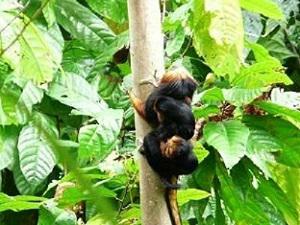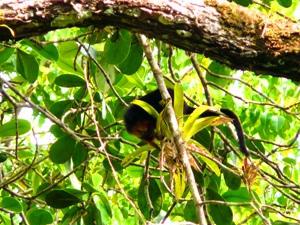Leonardo de Carvalho Oliveira
Other projects
27 Mar 2008
Can Golden-Headed Lion Tamarins Survive in Cabruca Agroforest? Management Implications for an Endangered Species and Habitat
The goal of my research is to understanding the relationship (through behavioural study) between an endangered primate species (Leontopithecus chrysomelas) and the most abundant vegetation on its range, an agroforest locally known as cabruca.

Results from my studies show that the golden-headed-lion tamarin (GHLT) an endangered primate endemic to Brazil’s Atlantic Forest can live and reproduce in some types of cabruca agroforest, the predominant forest habitat in the region. Populations living in different habitats may present different behaviours which allow them to survive in those habitats—or not. The knowledge of these behaviours allow us to understand how the environment affect the species and to determine the minimum requirements for the species’ survival.

This information is essential for conservation actions on behalf of the species. I will collect specific behaviours from groups of GHLTs that live exclusively in cabruca areas to address this issue. The goal of this research is to identify minimum requirements in terms of resources for the GHLTs in cabruca agroforest. Specifically, I want to know what are the key resources for the tamarins in cabruca and if bromeliads are important for the tamarins in cabruca as they have been reported for other habitats. I will address this question by studying the behaviour of three habituated groups of GHLTs living exclusively in cabruca. One individual of each group has a radio-collar that allow us to follow them in the field. Groups will be followed on full and partial days of observation. Group scans will be done at 20-min intervals and their behaviours will be noted. All resources used by the tamarins in cabruca will be marked and identified. Our behavioural data collection will focus on foraging in Bromeliads.

The behavioural data will be collected for a period of one year. I expect to identify what are the characteristics of cabruca and key resources for the GHLTs in cabruca to be used on the management of cabruca on behalf of species.